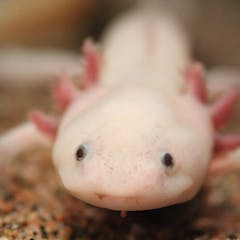
Articles on Amphibians
Displaying 1 - 20 of 49 articles

Among the poisons found in 36% of the frogs tested, rodenticide was detected for the first time. Pesticides are considered a threat to hundreds of amphibian species.

Only after a species is identified and listed by taxonomists can it be protected. Yet we still don’t have one globally agreed-upon list of every species. A new 74-nation survey points to the solution.

New research looks at how different species have managed to cross geographic barriers throughout history and whether their individual traits played a crucial role in these journeys.

Introduced species and diseases can drive native species into smaller environmental niches – and that could mean change to how we work to conserve them.

Great crested newts cause expensive delays to construction – trained sniffer dogs may offer a solution.

The chytrid fungal disease has been decimating frog populations worldwide for decades, and research progress has been slow. A new method for detecting the disease could help change its course.

Huge swathes of Africa remain unstudied and their species undocumented.

Amphibians have been devastated by a chytrid fungus pandemic. Researchers immunized California red-legged frogs in Yosemite to give them a fighting chance at survival, with surprising results.

New research has found that since the mid-1980s, the economic impact of invasive reptiles and amphibians totals more than US$17 billion.

Axolotls are amphibians known for their ability to regrow their organs, including their brains. New research clarifies their regeneration process.

Habitat protection and restoration, advanced reproductive technologies and reintroduction procedures could help slow the decline of western chorus frogs and other amphibians.

If you’re hot, so are your four-legged neighbours.

Our research is countering some previous ideas about what factors might slow down ageing. Further study could help us create targeted treatments in humans too.

Thousands of sick and dead frogs are turning up around Australia, bizarrely lying out in the open. If you see one, let these scientists know.

Reptiles get a bad rap, but this is because they’re misunderstood. Promoting healthy reptile pet ownership can contribute to conservation and education efforts.

Madagascar stands out as an exceptionally interesting place in which to study the evolution of “mini” creatures. And we are only just starting to scratch the surface of this.

Britain’s native amphibians are in steep decline thanks to wetlands disappearing and ponds drying up.

The Bsal fungus is not yet here in North America, or any place in the Western Hemisphere, but there is concern that the pet trade is the most likely route for introduction here.

If albanerpetontids were around today, they’d easily fit in your hand. And although their bones are found all over the world, these unique amphibians eluded experts for a long time.

A new study examines the diet of an invasive population of guttural toads in Mauritius and finds a number of species of conservation concern.
